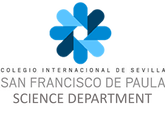Unit 7 - Ecology and environment
Key concept - Systems -
Related concepts - Interaction, Environment and Energy -
Global context - Globalization and Sustainability -
Statement of Inquiry:
The interactions between life and its environment is a well balanced system, product of evolutionary processes. With the slightest change it can collapse with mayor consequences.
Related concepts - Interaction, Environment and Energy -
Global context - Globalization and Sustainability -
Statement of Inquiry:
The interactions between life and its environment is a well balanced system, product of evolutionary processes. With the slightest change it can collapse with mayor consequences.
Task guide
The tasks and questions on the Weebly will be coloured to represent the different style of questions that you will find in your exams. The task should be completed in your "Natural Sciences" GoogleDrive document.
Green - Explaining scientific knowledge
Orange - Applying scientific knowledge and understanding
Red - Analysing and evaluating information
There will also be "extension" tasks for students who finish tasks quickly! Also look out for links to interactive resources and videos.
The tasks and questions on the Weebly will be coloured to represent the different style of questions that you will find in your exams. The task should be completed in your "Natural Sciences" GoogleDrive document.
Green - Explaining scientific knowledge
Orange - Applying scientific knowledge and understanding
Red - Analysing and evaluating information
There will also be "extension" tasks for students who finish tasks quickly! Also look out for links to interactive resources and videos.

